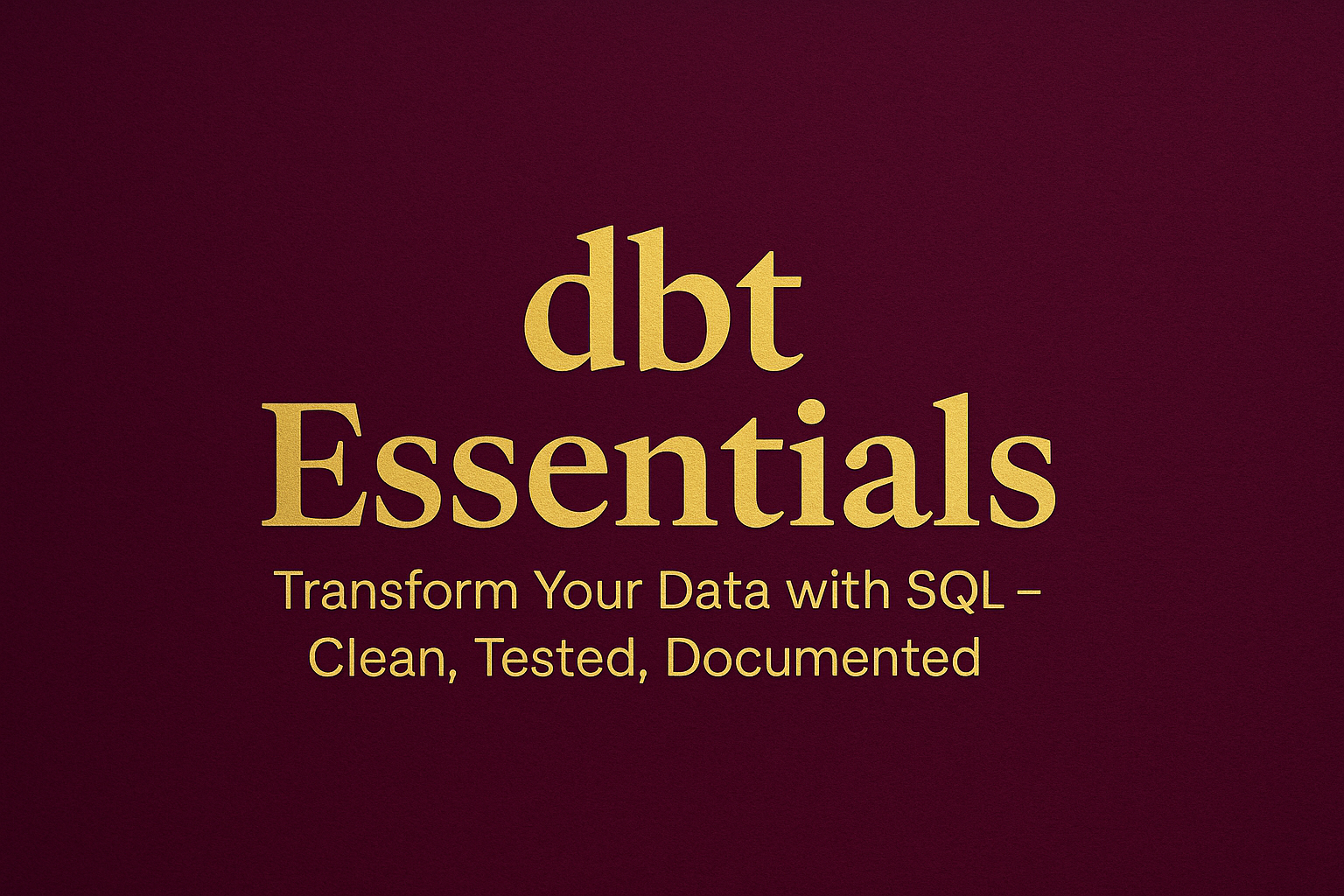dbt Essentials. Transform Your Data with SQL – Clean, Tested, Documented
Who Is This Course For? This course is designed for SQL users—analysts, business intelligence specialists, and data professionals—who are comfortable writing SQL queries but have little or no experience with modern data engineering tools. If you’ve ever felt limited by …
Overview
Who Is This Course For?
This course is designed for SQL users—analysts, business intelligence specialists, and data professionals—who are comfortable writing SQL queries but have little or no experience with modern data engineering tools. If you’ve ever felt limited by your SQL scripts or struggled to keep your data transformations reliable, maintainable, and well-documented, this course is for you. Whether you work in analytics, reporting, or want to break into data engineering, dbt Essentials will empower you to take full control of your data transformation workflow like a software engineer—while staying in the comfort zone of SQL.
Why Learn dbt?
dbt (Data Build Tool) is the industry-standard framework for transforming, testing, and documenting data in modern data warehouses. It lets you treat your SQL like code—so you can organize, automate, and collaborate on transformations with confidence and clarity. No more messy, hard-to-maintain SQL scripts; no more guessing what data is trustworthy. With dbt, you’ll learn to:
- Build clean, reusable, and version-controlled data models
- Test your data for accuracy and completeness—before your end users find mistakes
- Keep your analytics transparent and documented for your team
- Automate and schedule your data pipelines, freeing up your time for real analysis
- Collaborate smoothly with others, even if you’ve never used Git or command-line tools before
What Will You Learn?
dbt Essentials gently guides you from your first dbt project to advanced features, using plain English, relatable analogies, and lots of hands-on SQL examples. Each lesson is focused, jargon-free, and beginner-friendly—so you’re never overwhelmed. By the end, you will:
- Understand what dbt is—and isn’t—and why it exists
- Install dbt Core and connect to popular data warehouses like BigQuery and Snowflake
- Create your first dbt project and easily navigate its file structure
- Write and organize models (SQL files) to transform your raw data into clean, trustworthy tables
- Use dbt’s simple dependency system to build complex data pipelines, safely and clearly
- Test your data with out-of-the-box and custom checks, catching issues before they reach dashboards
- Document your models and generate beautiful, interactive documentation automatically
- Leverage advanced features like Jinja templating, macros, seeds, snapshots, and environment configs
- Deploy and automate dbt runs, integrate with CI/CD tools, and collaborate with teammates using Git
- Apply best practices for project structure, code modularity, and scaling dbt as your data grows
- Practice with a realistic mini-project to build your confidence and prepare for real-world projects
How Is This Course Different?
We start from zero: no prior knowledge of Git, YAML, or command-line tools is required. Every concept is explained step by step, with friendly analogies (like “dbt models are like recipes for your data”) and practical use cases. You’ll see how to:
- Turn a messy SQL workflow into a clear, reliable assembly line for your data
- Write tests as simply as writing another SQL query
- Document your work so future you (and your teammates) never have to guess what’s going on
Throughout, you’ll build real skills—not just follow instructions. By the end, you’ll not only know how to use dbt, but also why each step matters. You’ll leave confident to build, test, document, and automate data transformations at any scale.
What’s Included?
- 10 clear, focused modules with step-by-step lessons
- Dozens of practical examples and hands-on exercises
- Quizzes to check your understanding along the way
- A final practice project using a realistic e-commerce dataset
- A glossary of key dbt terms and concepts
Whether you want to supercharge your analytics, make your team’s data more trustworthy, or step into the world of modern data engineering, dbt Essentials will help you get there—one SQL step at a time.
Curriculum
- 11 Sections
- 51 Lessons
- Lifetime
- 1. Introduction to dbt4
- 2. Setting Up Your Project6
- 3. Creating Models6
- 4. Dependencies and DAG6
- 5. Testing and Validating Data6
- 6. Documentation and Lineage6
- 7. Advanced Features9
- 7.1467A 7.1 Using Jinja in SQL (Templating Basics)
- 7.2467A 7.2 Macros and Reusable SQL Snippets
- 7.3467A 7.3 Variables in dbt
- 7.4467A 7.4 Seeds: Loading Static Data
- 7.5467A 7.5 Snapshots: Tracking Slowly Changing Dimensions
- 7.6467A 7.6 Hooks and Operations
- 7.7467A 7.7 Tags and Selectors
- 7.8467A 7.8 Environment Configs: dev and prod Separation
- 7.101467A 7. Quiz3 Questions
- 8. Deployment and Automation7
- 8.1467A 8.1 Scheduling dbt Jobs
- 8.2467A 8.2 Integrating with Airflow, GitHub Actions, and CI/CD
- 8.3467A 8.3 Version Control for dbt Projects (Git Basics)
- 8.4467A 8.4 Team Collaboration Best Practices
- 8.5467A 8.5 Using dbt Cloud Job Scheduler
- 8.6467A 8.6 Alerting and Monitoring dbt Runs
- 8.101467A 8. Quiz3 Questions
- 9. Best Practices and Project Structure6
- 10. Final Practice and Exam Prep5
- 467A FinalQuiz1










